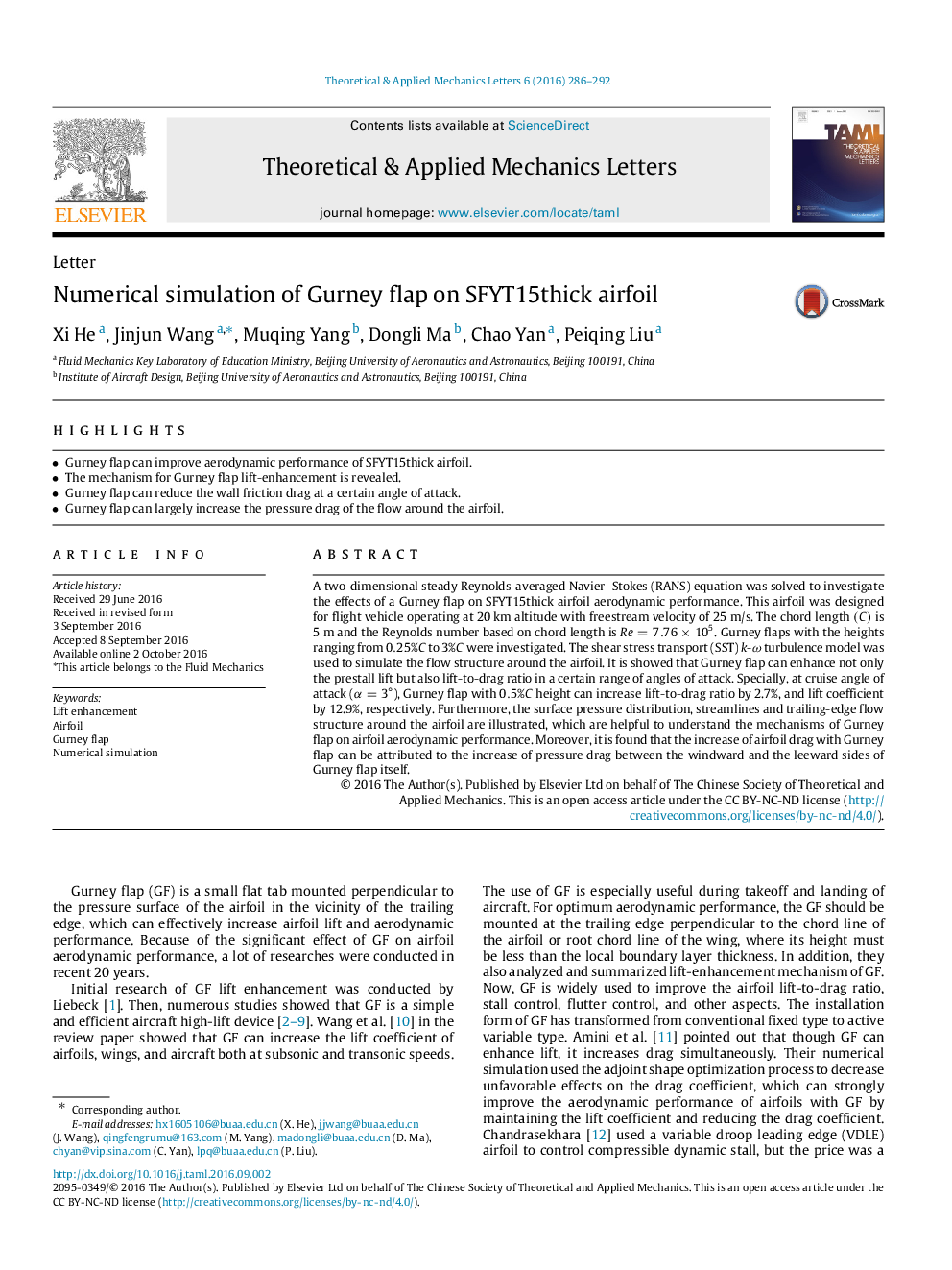| Article ID | Journal | Published Year | Pages | File Type |
|---|---|---|---|---|
| 5019938 | Theoretical and Applied Mechanics Letters | 2016 | 7 Pages |
â¢Gurney flap can improve aerodynamic performance of SFYT15thick airfoil.â¢The mechanism for Gurney flap lift-enhancement is revealed.â¢Gurney flap can reduce the wall friction drag at a certain angle of attack.â¢Gurney flap can largely increase the pressure drag of the flow around the airfoil.
A two-dimensional steady Reynolds-averaged Navier-Stokes (RANS) equation was solved to investigate the effects of a Gurney flap on SFYT15thick airfoil aerodynamic performance. This airfoil was designed for flight vehicle operating at 20 km altitude with freestream velocity of 25 m/s. The chord length (C) is 5 m and the Reynolds number based on chord length is Re=7.76Ã105. Gurney flaps with the heights ranging from 0.25%C to 3%C were investigated. The shear stress transport (SST) k-Ï turbulence model was used to simulate the flow structure around the airfoil. It is showed that Gurney flap can enhance not only the prestall lift but also lift-to-drag ratio in a certain range of angles of attack. Specially, at cruise angle of attack (α=3°), Gurney flap with 0.5%C height can increase lift-to-drag ratio by 2.7%, and lift coefficient by 12.9%, respectively. Furthermore, the surface pressure distribution, streamlines and trailing-edge flow structure around the airfoil are illustrated, which are helpful to understand the mechanisms of Gurney flap on airfoil aerodynamic performance. Moreover, it is found that the increase of airfoil drag with Gurney flap can be attributed to the increase of pressure drag between the windward and the leeward sides of Gurney flap itself.
